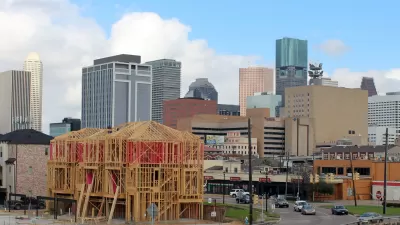In its history, Los Angeles has made four fateful planning decisions, in the opinion of real estate consultant and developer Michael P. Russell, but much can be learned from these mistakes.
Los Angeles has, as other cities have, made many planning mistakes over its history. However, four of these mistakes distinguish it from the pack, according to Los Angeles real estate developer and advisor, Michael P. Russell:
1) Siting the City Inland: "It started with the founding of the city. Every other world-class city is located on a body of water—an ocean or a river. If an ocean or sea is near by, a city usually is located on the water. This did not happen in the case of Los Angeles."
2) Rejecting the Olmsted Recommendations. "In 1930, the firm started by the sons of the great landscape architect Frederick Law Olmsted, designer of Central Park in New York in addition to other projects, proposed a comprehensive and coherent network of parks, playgrounds, schools, beaches, forests, and transportation to promote the social, economic, and environmental vitality of Los Angeles and the health of its people. . . . Instead, civic leaders killed the Report because of politics, the bureaucracy and private landowner greed."
3) Channelization of the Los Angeles River: The "48 mile “river” was turned into a concrete channel from Simi Valley to Long Beach."
4) Leaving the Park out of South Park: "In 1970, the Central City Association of Los Angeles retained Wallace McHarg Roberts and Todd to prepare a General Development Plan for downtown Los Angeles that . . . called for a 25-acre park—South Park—two blocks east of what is now Staples Center. . . . However, true to form, the City and the LA Redevelopment Agency did not implement the Wallace McHarg Roberts and Todd plan. Thus, there was 'no park in the South Park' area."
Mr. Russell concludes "[w]hat are the lessons learned from these swing and misses? (1) Planning and land use issues are important and our decisions or lack thereof live on for a long time. (2) As communities, we must have a clear vision and act boldly. (3) We need to put a leader in charge of implementing the bold vision. (4) The leader must be given the authority to implement the vision. (5) We need to give the person in charge the financial and other necessary resources to implement the vision in a timely manner. (6) If we create an environment where the vision is being implemented in a timely manner, the private and non-profit sectors will join the parade."
FULL STORY: Swung on and Missed

Maui's Vacation Rental Debate Turns Ugly
Verbal attacks, misinformation campaigns and fistfights plague a high-stakes debate to convert thousands of vacation rentals into long-term housing.

Planetizen Federal Action Tracker
A weekly monitor of how Trump’s orders and actions are impacting planners and planning in America.

In Urban Planning, AI Prompting Could be the New Design Thinking
Creativity has long been key to great urban design. What if we see AI as our new creative partner?

Massachusetts Budget Helps Close MBTA Budget Gap
The budget signed by Gov. Maura Healey includes $470 million in MBTA funding for the next fiscal year.

Milwaukee Launches Vision Zero Plan
Seven years after the city signed its Complete Streets Policy, the city is doubling down on its efforts to eliminate traffic deaths.

Portland Raises Parking Fees to Pay for Street Maintenance
The city is struggling to bridge a massive budget gap at the Bureau of Transportation, which largely depleted its reserves during the Civd-19 pandemic.
Urban Design for Planners 1: Software Tools
This six-course series explores essential urban design concepts using open source software and equips planners with the tools they need to participate fully in the urban design process.
Planning for Universal Design
Learn the tools for implementing Universal Design in planning regulations.
Gallatin County Department of Planning & Community Development
Heyer Gruel & Associates PA
JM Goldson LLC
City of Camden Redevelopment Agency
City of Astoria
Transportation Research & Education Center (TREC) at Portland State University
Jefferson Parish Government
Camden Redevelopment Agency
City of Claremont




























